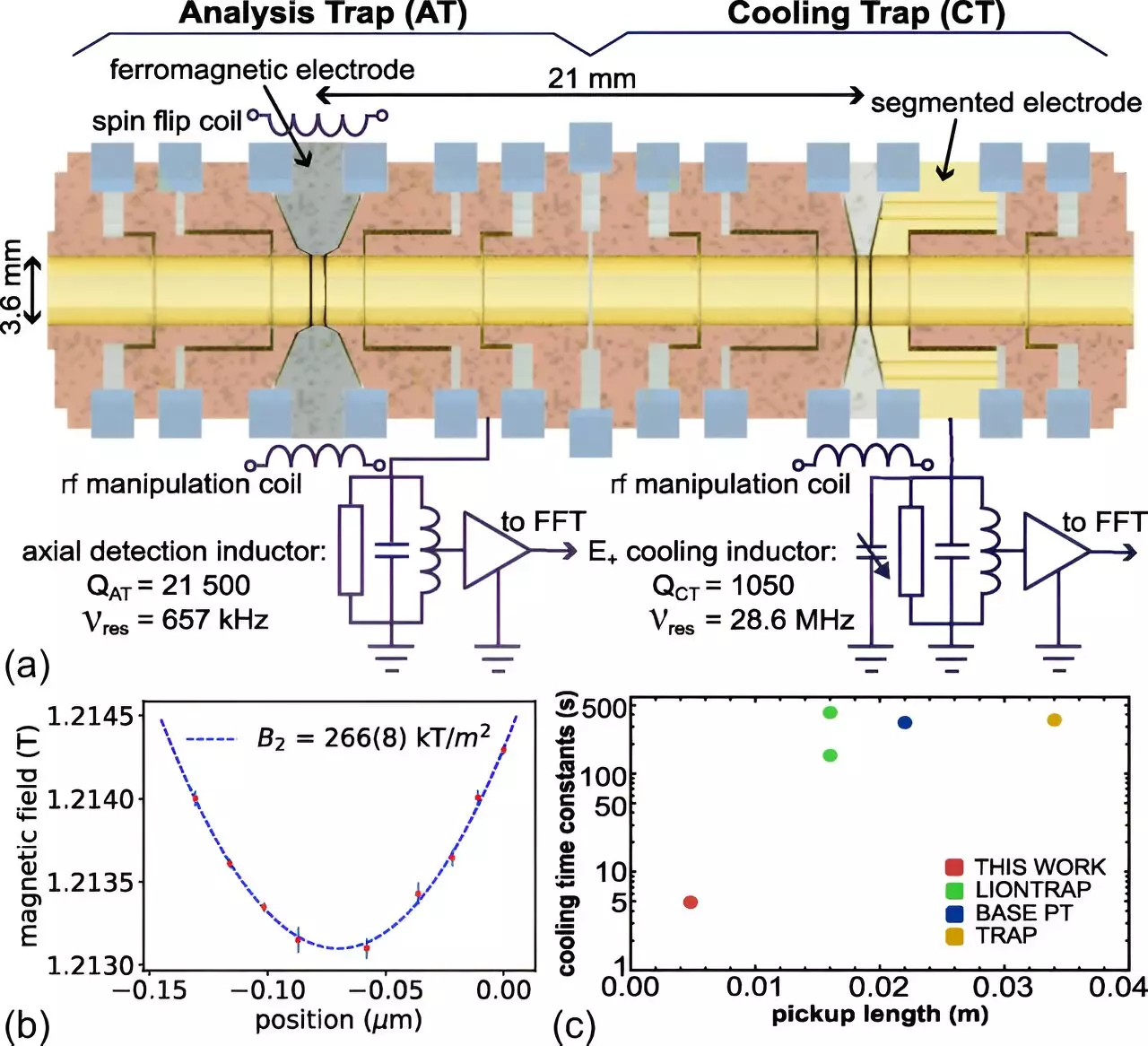The universe is a vast and complex place, filled with mysteries that scientists have been trying to unravel for centuries. One of the most enduring mysteries is the question of why the universe contains matter but very little antimatter. This question has baffled physicists for decades, as the standard model of particle physics predicts that matter and antimatter should be created and annihilated in equal quantities. However, there is clearly an imbalance, with more matter than antimatter present in the universe.
The BASE international research collaboration, led by Professor Dr. Stefan Ulmer from Heinrich Heine University Düsseldorf, has made an experimental breakthrough in this area. The researchers have developed a trap that can cool individual antiprotons much more rapidly than ever before. This trap allows for extremely precise measurements of the mass and magnetic moment of antiprotons, which can help identify possible matter-antimatter asymmetries.
After the Big Bang, the universe was filled with high-energy radiation that constantly generated pairs of matter and antimatter particles, such as protons and antiprotons. When these particles collide, they are annihilated and converted back into pure energy. According to the standard model, equal amounts of matter and antimatter should be generated and annihilated, resulting in a universe devoid of matter. However, there is a clear asymmetry, with a tiny bit more matter than antimatter being generated, which contradicts existing theories.
To address this discrepancy, physicists need to make extremely precise measurements of fundamental physical parameters. The BASE collaboration, which includes universities and research facilities from around the world, is focused on answering the central question of whether matter particles and their corresponding antimatter particles have exactly the same properties. This includes determining if they weigh the same and have the same magnetic moments.
The researchers at BASE have developed a new cooling method that allows for the rapid cooling of antiprotons to extremely low temperatures. By combining two Penning traps into a single device, they have created a “Maxwell’s demon cooling double trap” that can selectively cool the coldest antiprotons and reject warmer particles. This advancement has significantly reduced the time needed to prepare antiprotons for measurements, allowing for more accurate and faster data collection.
With the improved trapping and cooling techniques, the researchers at BASE have already made significant progress in measuring the magnetic moments of protons and antiprotons. They have reduced the error rate and are aiming to achieve even higher levels of precision in future measurements. The ultimate goal is to construct a mobile particle trap that can transport antiprotons from CERN to a new laboratory at HHU, where measurements can be made with even greater accuracy.
The research conducted by the BASE collaboration is shedding new light on the mystery of antimatter in the universe. By making groundbreaking advancements in trapping and cooling techniques, the researchers are able to make highly precise measurements of fundamental physical parameters. These measurements will help to further our understanding of the nature of matter and antimatter, and may ultimately lead to a better understanding of the origins of the universe.


Leave a Reply